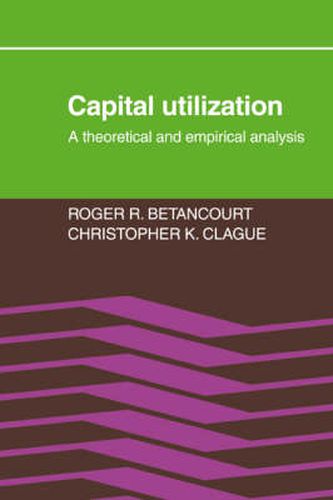Readings Newsletter
Become a Readings Member to make your shopping experience even easier.
Sign in or sign up for free!
You’re not far away from qualifying for FREE standard shipping within Australia
You’ve qualified for FREE standard shipping within Australia
The cart is loading…






This book presents the theory of capital utilization, a discussion of the econometrics of capital utilization, and econometric tests of the theory using international data. Capital utilization, defined as the proportion of time that capital is working productively, is mainly affected by shift-working. Capital utilization is an important economic variable that has received serious attention from economists only since the mid-1960s In the first part, the authors provide a synthesis of current knowledge, combining a consistent statement of existing theory with some major extensions. In the second part, they turn to the econometrics, first discussing the appropriate methodology and then testing the theory on data from several countries. This empirical work is considerably more sophisticated than previous studies on this topic. Having established the theory and tested it, they move on to consider policy, the relationship between capital utilization and economic growth, and the place of shift-work in the dual economy.
$9.00 standard shipping within Australia
FREE standard shipping within Australia for orders over $100.00
Express & International shipping calculated at checkout
This book presents the theory of capital utilization, a discussion of the econometrics of capital utilization, and econometric tests of the theory using international data. Capital utilization, defined as the proportion of time that capital is working productively, is mainly affected by shift-working. Capital utilization is an important economic variable that has received serious attention from economists only since the mid-1960s In the first part, the authors provide a synthesis of current knowledge, combining a consistent statement of existing theory with some major extensions. In the second part, they turn to the econometrics, first discussing the appropriate methodology and then testing the theory on data from several countries. This empirical work is considerably more sophisticated than previous studies on this topic. Having established the theory and tested it, they move on to consider policy, the relationship between capital utilization and economic growth, and the place of shift-work in the dual economy.